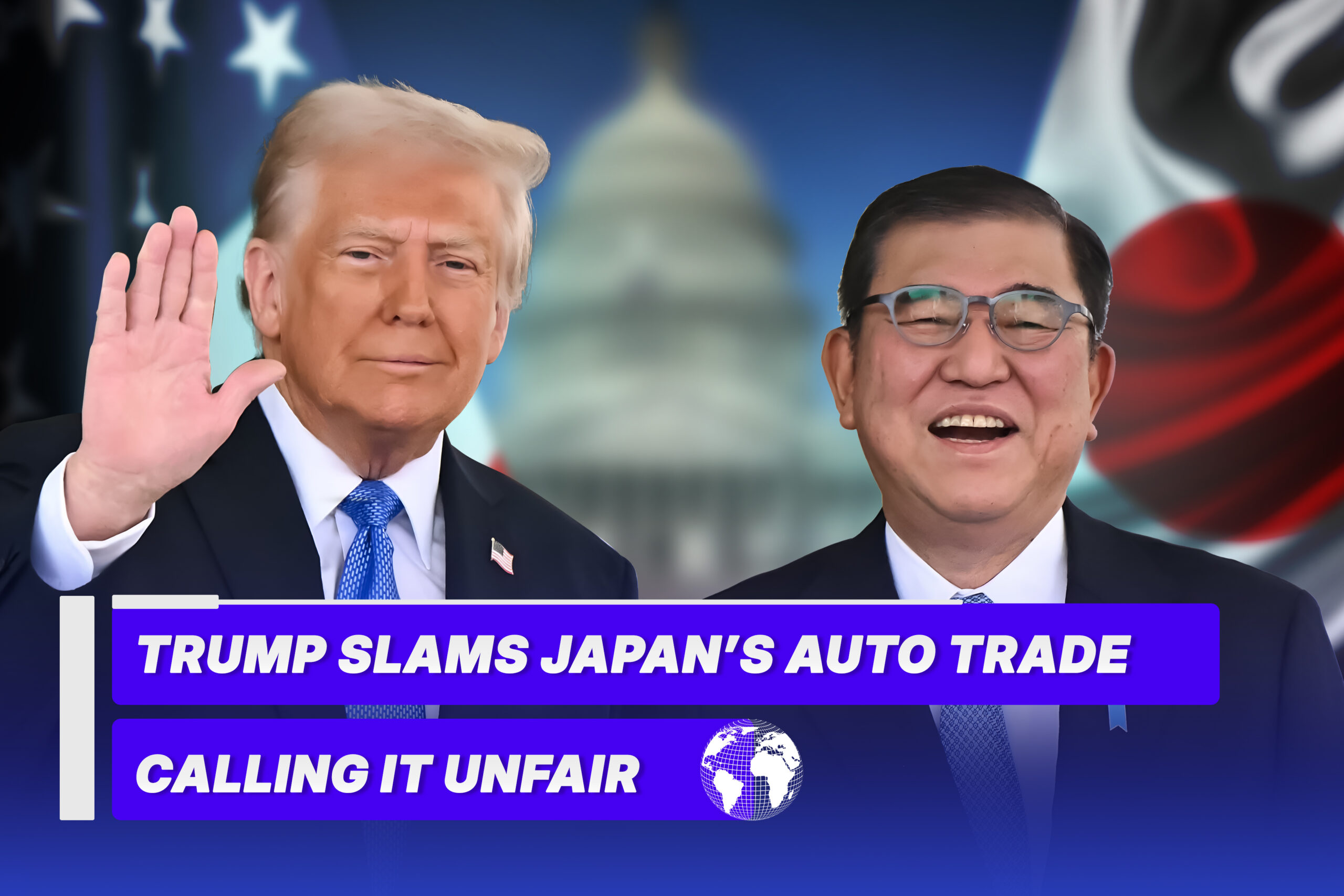Japan is quickly running out of time to reach a tariff agreement with the U.S. on crucial auto exports. Here’s what’s really going on with Japan’s auto trade.
Trump Slams Japan’s Auto Trade Practices
President Trump didn’t hold back when he labeled Japan’s auto trade with the U.S. as “unfair.” Speaking on Sunday, he pointed out the imbalance in car imports between the two countries: “They won’t take our cars, and yet we take millions and millions of their cars into the United States. It’s not fair, and I explained that to Japan, and they understand it.”
Trump also called attention to the large trade deficit the U.S. has with Japan and suggested that Japan could help close this gap by importing more American goods, especially energy products. “We have a big deficit with Japan, and they understand that too. Now we have oil. They could take a lot of oil, they could take a lot of other things,” he said.
The Pressure of the July 9 Tariff Deadline
Japan is under intense pressure to finalize a deal with the U.S. before the July 9 deadline, which marks the end of the 90-day pause on wide-ranging U.S. tariffs.
The auto industry is a huge part of this discussion, accounting for about 28% of Japan’s $145 billion exports to the U.S. last year. If no deal is reached, the U.S. will likely maintain the steep 25% tariff on Japanese vehicles.
The two countries recently completed their seventh round of talks, agreeing to continue negotiations after Trump’s comments aired on Fox News, but time is running out.
The Trade Numbers Behind the Dispute
In 2024, Japan’s trade surplus with the U.S. hit $59.3 billion, with vehicles and auto parts making up roughly 82% of that gap, according to Bloomberg. This makes Japan the seventh-largest trade surplus holder with the U.S. among Washington’s trading partners.
Tokyo’s lead trade negotiator, Ryosei Akazawa, argues that the U.S. tariffs on autos are unreasonable, pointing out that Japan’s auto industry has invested a whopping $60 billion in the American economy and supports 2.3 million local jobs.
Tariffs on U.S. Cars and the Future of Auto Trade
Trump has warned that countries charging high tariffs, like 35% or 40%, on American cars will face the same treatment, potentially increasing U.S. tariffs from 25% to even higher rates.
Meanwhile, Japan doesn’t impose tariffs on vehicle imports, and under the U.S.-Mexico-Canada Agreement, the U.S. doesn’t charge tariffs on passenger cars imported from its neighbors either. Before this agreement, the U.S. tariff on vehicle imports outside of this pact was just 2.5%.
Why American Cars Struggle in Japan
Trump blames non-tariff barriers, such as Japan’s strict fuel economy standards, for keeping American cars out of the Japanese market. However, analysts point to other challenges: Japan’s unique driving conditions, such as right-hand drive vehicles and narrow streets, make it difficult for American manufacturers to expand there.
Martin Schulz, chief policy economist at Fujitsu’s Global Market Intelligence Unit, suggests that a basic framework agreement might be reached before July 9, with finer details to follow.
No Extension: The Final Countdown
Trump recently confirmed he won’t extend the July 9 deadline, putting Japan and other countries under significant pressure to wrap up negotiations fast.
Instead of prolonging talks, Trump said he plans to send official letters declaring the negotiations over and making clear that tariffs will apply. He joked, “I’m going to send letters. I could send one to Japan: ‘Dear Mr. Japan, here’s the story. You’re going to pay a 25% tariff on your cars.”
The clock is ticking, and whether Japan and the U.S. can find common ground remains to be seen. But one thing is clear, this trade dispute will have real consequences for automakers and consumers on both sides of the Pacific.





